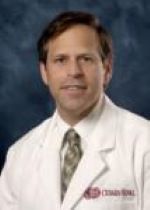 This month the PNA Spotlight focuses on Dr. Adam Mamelak, a neurosurgeon and co-director of the Pituitary Center at Cedars Sinai Medical Center in Los Angeles. Dr. Mamelak earned his B.A. in Physics at Tufts University and earned his MD from Harvard Medical School. He did a surgical internship and then a residency at the University of California at San Francisco Medical Center. He did a fellowship at the Epilepsy Research Laboratory at UCSF, and another postdoctoral fellowship in neuroscience at the California Institute of Technology & Huntington Medical Research Institutes in Pasadena, California. Dr. Mamelak was kind enough to answer a series of questions from the PNA.
This month the PNA Spotlight focuses on Dr. Adam Mamelak, a neurosurgeon and co-director of the Pituitary Center at Cedars Sinai Medical Center in Los Angeles. Dr. Mamelak earned his B.A. in Physics at Tufts University and earned his MD from Harvard Medical School. He did a surgical internship and then a residency at the University of California at San Francisco Medical Center. He did a fellowship at the Epilepsy Research Laboratory at UCSF, and another postdoctoral fellowship in neuroscience at the California Institute of Technology & Huntington Medical Research Institutes in Pasadena, California. Dr. Mamelak was kind enough to answer a series of questions from the PNA.
His answers follow.
• What inspired you to choose your career path?
I was inspired to become a neurosurgeon based on a sincere desire to understand how the brain works, combined with the need to have an impactful role in the care of patients. As I looked at various career paths in medicine, only neurosurgery seem to fulfill that twin desire. Once I began working as a neurosurgeon, I was drawn to the field of pituitary tumors, both out of a fascination with the complex interplay between the brain, bodily hormones, and overall health, as well as a fascination with the surgical methods that are unique to this area of neurosurgery. Fortunately, my inspiration has proved to be entirely correct. In my practice I can treat patients with complex diseases in a hands-on way. But at the same time, I have the opportunity to advance the field forward through research clinical trials and other interactions.
• What is the primary focus of your work/research?
The primary focus of my work is in developing fluorescent markers to detect tumors intraoperatively. I have helped to develop an imaging system that relies on a protein derived from scorpion venom which, when attached to a near-infrared dye, is taken up by tumors and literally turns them fluorescent during surgery. This allows surgeons to get safer and more complete removal of the tumor while avoiding injury to the surrounding structures such as the pituitary gland or stalk. I have also done substantial work in the development of surgical techniques for the removal of pituitary masses.
• What do you consider to be the future of your field?
In my opinion, the future of our field will see the progressive elimination of the need for surgery. The development of medical therapies will shrink or eliminate tumors and correct hormonal imbalances without the need to operate. Furthermore, the development of stem cell transplants that can regenerate pituitary function is an exciting new horizon. Much like the transplantation of pancreatic cells for patients with insulin-dependent diabetes, there is hope that stem cells from the pituitary gland can be transplanted to regenerate normal hormone production after tumors or other treatments lead to their loss.
• What should patients know about your field/what deserves more recognition/awareness?
The most critical thing for patients to know about the field of pituitary disorders and pituitary tumors in general is that even though these tumors are very common, the typical neurosurgeon treats very few of them in a given year. Patients may be surprised to know that the average neurosurgeon in a busy clinical practice performs no more than 1-3 pituitary operations in a year! Substantial data demonstrates that surgeons who perform at least 30-50 pituitary surgeries a year have much better and safer outcomes. This impact is further realized for more complex situations such as craniopharyngiomas and meningiomas, where only surgeons with significant experience in endoscopic methods will be able to remove these growths safely. Patients should be aware that they should seek out expert providers before any surgery is undertaken, not after the fact. This is under-recognized. This concern must also be more recognized by insurers, as expert and efficient pituitary surgical care results in lower costs to them as well.
• What would you like to convey about yourself to your patients?
I would like my patients to know that I am completely dedicated to their care. My primary focus is figuring out what is the best individual solution for a specific patient. For some patients, surgery is appropriate. And for many others, observation alone or medical treatment is the correct solution. Even though I am a surgeon, I am by no means biased toward surgery. In fact, I tend to take a conservative approach in many situations. However, once surgery is appropriate, my expertise and experience – as well as the comprehensive care available through the pituitary program at Cedars Sinai – will help ensure a smooth and optimal outcome.
• Why did you get involved with the PNA; what is the extent of your involvement?
My involvement with the PNA is to provide a resource and become a patient advocate. PNA does a great job in making patients aware of the signs and symptoms of pituitary disease as well as treatment options to maximize care. It provides a great resource for helping patients navigate the complex health care system. As a physician and patient advocate, I primarily serve as a reference point for patients seeking information or for outside groups seeking expert consultation.
